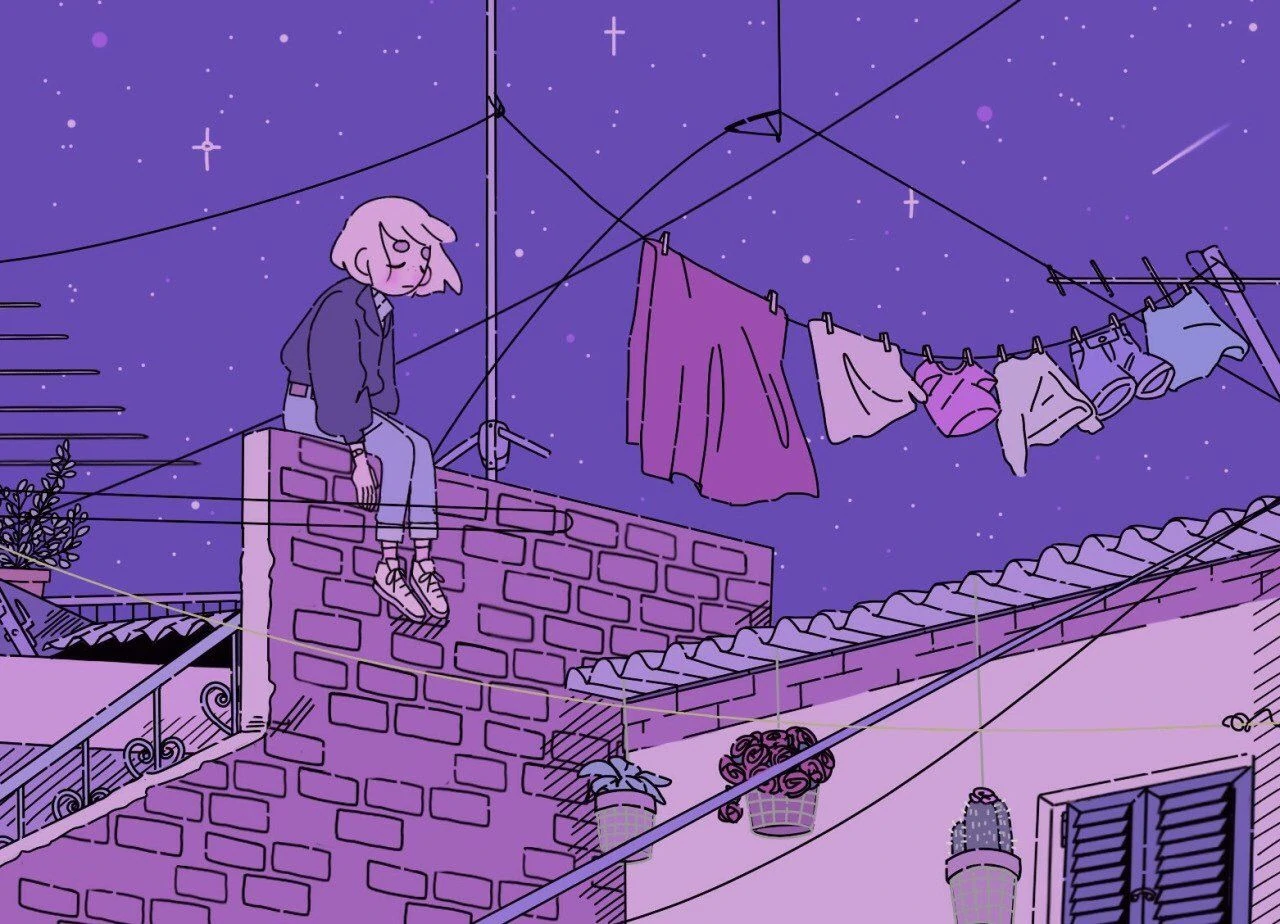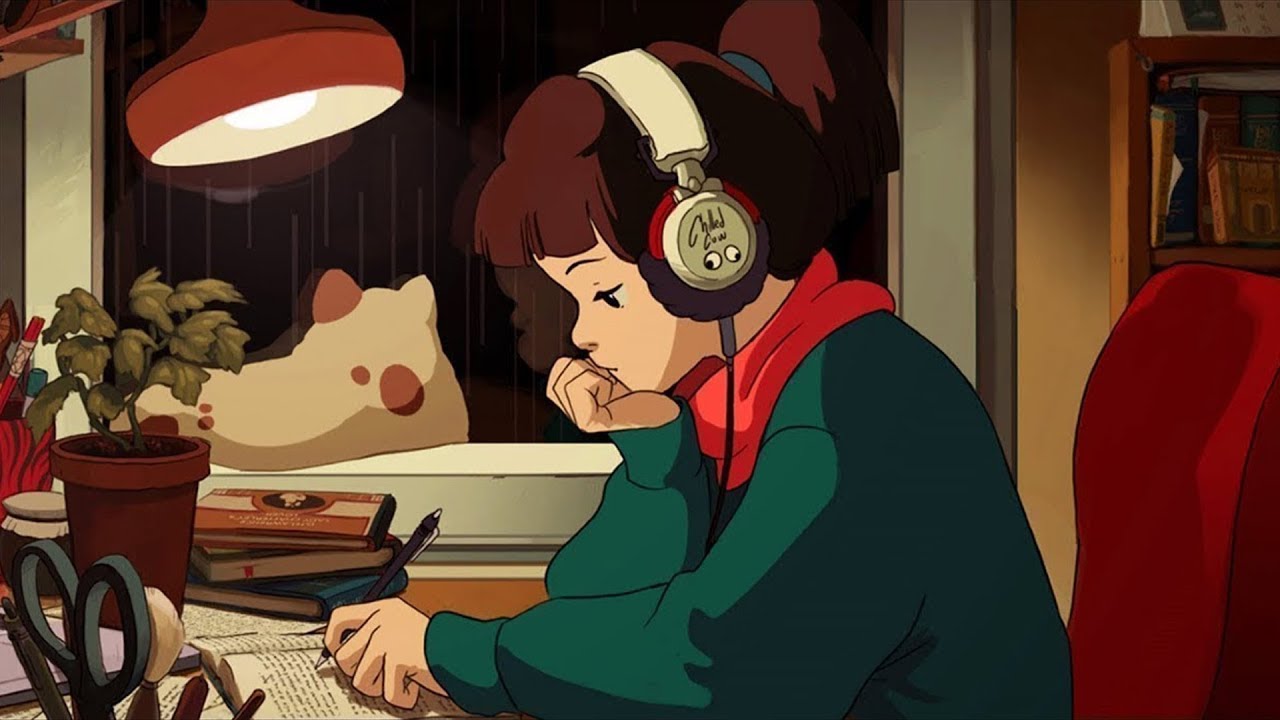Rediscovering a forgotten genre
With the last couple of years being quite challenging, people all over the world in self-isolation have turned to music for comfort, myself included. Doing so, (they) gave a shot to a genre called Lo-Fi, to be rediscovered. Often referred to as ‘healing music’, you’ll see loads of people in YouTube comments or other online discussions telling stories about how this genre of music ‘helped them through some rough patches. But to grasp all of that, we first need to understand what Lo-Fi actually is, and how it draws millions of listeners.
What is Lo-Fi Music?
“Lo-Fi” is an abbreviation for “low fidelity,” a musical term referring to a recording of poor or flawed quality, with background noise or performance mistakes. These deficiencies were an inevitable result of the limiting home-recording equipment. On the contrary, high-fidelity music comprises crisp, clear sounds with no audio distortions or noise. In other words, Lo-Fi music emphasizes the things that Hi-Fi music would typically filter out.
From a quality standpoint, Lo-Fi can be spotted in all kinds of different music genres. It has origins and qualities in jazz, rock, hip-hop, electronic music, and the chillwave scene. It combines all these elements with a homemade music aesthetic that also focuses on the poor and flawed qualities of analog recording equipment. This fusion led to the creation of a music genre that turned out to be exemplary as background music, either to relax, to work, or, most often, while studying and trying to focus.
The anatomy of Lo-Fi Music
Nowadays, Lo-Fi music tends to purposely oppose its own definition, shifting its aim at offering something that higher fidelity music does not. By spanning to various genres, and taking all these different elements, it’s easy to get lost in translation. Nevertheless, some main characteristics can easily be identified.
- Drum Loops. The majority of the genre consists of repeating, slow, and groovy beats. These drum samples are either produced electronically or through live recordings, with beatmakers preferring the latter. The beat makes you sway your head unconsciously to the rhythm while urging you to close your eyes. Ultimately creating the ideal background noise for relaxing, working, or studying.
- Jazz Chords. Chord progressions are another attribute. Something that was obviously borrowed from jazz music. The dreamy and relaxing nature of jazz chord progression made it a fundamental element of the Lo-Fi sound. As a result, this kind of music developed a groovy, retro vibe that hooks you to its rhythm even if you are listening to it for the first time.
- Samples. Even though Lo-Fi is mostly an instrumental kind of music, a lot of tracks incorporate vocal samples and other effects to create something new. This somewhat originated from the boom-bap movement in hip-hop. Many of the vocal samples are taken from anime purposely so that the connection between the two could be highlighted. Also, samples like the distinguishable record scratch and the background static of old vinyl, are a common way of conveying the nostalgia that accompanies the analog recordings.
History of Lo-Fi Music
In case you’re still feeling uncertain about the appeal of Lo-Fi music, then it would be best to explain how it ended up being what it is today. The end result of a sound that originated from technical limitations, and became an intentional nostalgic musical mood. So, explaining where Lo-Fi came from rather than what it is, might be more comprehensible.
Origins
Despite that the use of background noise, distortion, and flares is quite common nowadays, it wasn’t an intentional choice in the past. The music industry was pretty out of reach for most, meaning that the professional recording equipment was expensive and inaccessible to a lot of musicians. It was after digital audio workshops (DAWs) made their debut, that musicians started producing their own music at home.
However, even with the technology made available to the public, it was usually of lower quality, meaning that these home recordings had technical limitations. All these samples that are distinguishable and sought after in contemporary Lo-Fi music, weren’t always as such. Back then, they were more like unavoidable obstacles due to the restrictions of the technology that was accessible.
One of the first bands that went mainstream using only home recording equipment, was The Beach Boys, back in the ‘60s. The sound of Lo-Fi, though, spread throughout the music genres, with indie rock bands surfacing, like Beck. Or hip-hop artists such as A Tribe Called Quest and the Wu-Tang Clan. After that, the sound of the genre became rapidly connected with hip-hop culture.
While the at-home recording of hip-hop music was rising, another pivotal movement in hip-hop surfaced. It was called “boom-bap” and consisted of drum beats and looped samples taken from modern, for the time, music. By using a variety of really unconventional sounds, artists gave a nostalgic feeling of amateur rap sessions and house parties. The legal world of music copyright though, made it impossible for artists to sample professional songs, thus making the boom-bap scene phase into insignificance.
That was the case until all these amateur artists realized that they could produce their own beats, samples, and effects. And also make them sound nearly identical to the ones they were sampling all along. The same artists began creating dozens of libraries containing royalty-free music samples that other musicians could use without the fear of copyright infringement. Consequently, Lo-Fi music, as it is known nowadays, was born.
The Evolution of Lo-Fi Music
The majority, if not all, of Lo-Fi music, is purely digital. Point being that there are no CDs or physical records. You will not see a Lo-Fi artist touring or performing live, thus the cohesive whole exists almost entirely on the internet.
Notable Lo-Fi Artists
One of the pioneers of Lo-Fi hip-hop, named Nujabes, formed his own library of self-made and legal samples. As mentioned earlier, there exists a strong bond between Lo-Fi and anime. For that, Nujabes is also “responsible”. In 2004, he produced the soundtrack for a popular anime series called Samurai Champloo, which added some visuals to the tracks and made the connection between Lo-Fi and anime explicit.
Other, more recent Lo-Fi community channels/record labels have gained massive popularity in recent years on YouTube, and among them is ChilledCow (currently Lofi Girl), who started live-streaming back in 2015. In just two years, the channel streamed roughly 13,000 hours, with 7 million subscribers. Now, it has surpassed the 10 million subscriber mark! Some other notable Lo-Fi radio channels are ChillHop Music, and the bootleg boy 2.
Rise in Popularity
Current Lo-Fi music is easy and affordable to produce, while also being effortless to be found and shared throughout the community. Ultimately presenting Lo-Fi with an opportunity to thrive on YouTube. Many creators started making collections of Lo-Fi tracks and when YouTube streaming became available, these endless playlists were streaming 24/7.
Out of the blue, stacks of Lo-Fi hip-hop radio streams emerged on YouTube. Each, with its own aesthetic and nostalgic vibe, offers the best background music for every kind of activity. From studying to gaming and relaxing, or exercising. All these different reasons show that people are searching for music that allows them to burn off stress positively.
Lo-Fi is music to think to, as in absence of the “vocals”, there come your thoughts. That’s how Fat Jon (aka Ample Soul Physician), an influential figure of Lo-Fi hip-hop, and also a hip-hop producer, views why this music is perfect for people to focus while studying or working. By lacking all the extra sound information that Hi-Fi music usually has, it allows listeners to tune into the music without their attention being completely sidetracked by it.
What sets Lo-Fi apart
Combining these with nostalgic, familiar sounds and visuals, you have the ideal setting for focus and productivity. Such intentional technical defects of non-lyrical music filled with background noise and distortion, can provoke the cerebrum and help listeners focus and recall things better, as a 2019 Manila University study shows. Other perks of Lo-Fi music are reduced anxiety, restorative effects, and elevated mood.
On top of that, Lo-Fi music resonates with people because it motivates them to be more productive and perform better on personal projects. Once progress and improvement are seen when we struggle in our pursuits, we get motivated to pursue our dreams with even more commitment and passion.
Lastly, contemporary Lo-Fi with its ambiance and comforting vibe brings to the audience a sense which is both relaxing and embracing. So even if someone is listening to Lo-Fi for the first time, whatever the medium, they can instantly feel a sense of belonging. A sense of community. During the pandemic, people needed to feel that they are not alone in these troubled times. It came full circle when they started rediscovering Lo-Fi music and finding their respective communities online.
So, What About it?
Strictly criticizing Lo-Fi music for its imperfect quality would be unfair since it doesn’t mean it’s shallow. Underneath all that background noise and distortion, the slow jams produced as an end result, sing to people’s needs for refuge in this chaotic modern society. It’s not only about relaxing or studying.
It is a musical journey of creativity from all around the world that connects different souls, while also urging the listeners to pause for a moment and pay attention to the world around them. Ultimately, as technology becomes even more advanced and accessible, it is certain that Lo-Fi music as a genre will continue to evolve in fresh and surprising ways while retaining its vintage and recreational origins.
Quick closing note. If, by any chance, after reading this article, you think that you’ve found the perfect background music for your kickstart streaming channel,but you’re still struggling to find a stream deck, a lighting source, or even some soundproof panels? Look no further, we’ve got some great gear reviews for you!

